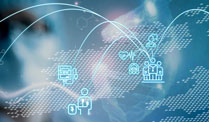Varicose Veins
I’ve been told that I have varicose veins. What does this mean?
Varicose veins are enlarged, bulging superficial veins that can be felt beneath the skin. They are usually located on the inside of the calf or thigh and develop due to weakness of the vein wall and loss of valve function in the vein. Under the pressure of gravity, they continue to enlarged, and in the course of time, they may become elongated and twisted.
Spider veins or telangiectasia are tiny dilated veins, usually less than 1-mm in diameter, located at the surface skin layers. Spider veins cannot be felt. Veins larger than the spider veins, but still under 3-mm are called reticular veins
What are the symptoms of varicose veins?
Varicose veins may in some cases be entirely symptom-free and cause no health problems, therefore treatment in such cases can primarily be for cosmetic purposes.
When symptomatic, varicose veins may cause pain, itching, swelling, burning, leg heaviness or tiredness, skin discoloration and ankle or leg swelling,
Symptoms typically worsen throughout the day and are partially relieved by elevation or wearing compression stockings.
Signs of chronic venous disease include skin pigmentation (usually rusty brown), and loss of the soft texture of the skin and underlying tissue in the ankle area (called induration). Itching is perhaps the most consistent symptom.
Sometimes, varicose veins can become hot, painful, hard and discoloured lumps on the legs. This is referred to as phlebitis. This is an uncomfortable but temporary condition that will get better on its own in two to three months. Clots associated with phlebitis are limited to surface veins, and not dangerous - unlike clots in the deep veins (deep vein thrombosis or DVT) that are dangerous because they can travel to the heart or lung and require prompt treatment with blood thinners.
Bleeding, a shower or minor trauma can cause a varicose vein to burst and bleed.
Skin tears or ulceration on the legs can indicate a very severe case.
What are the causes of varicose veins?
The causes of varicose veins may be primary, secondary, or congenital.
Primary varicose veins develop as a result of an inherent weakness in the wall of the vein. Varicose veins can be hereditary and often occur in several members of the same family.
Secondary varicose veins are those that develop after trauma or deep vein thrombosis.
Congenital varicose veins are due to disorders in the natural development of the venous system, and usually are part of a vascular malformation in the limb, present at birth. In addition to varicose veins, these individuals may also have an enlarged and longer limb and often have birthmarks (port-wine stains) such as Klippel Trenaunay syndrome (KT syndrome).
No matter the cause, defective venous valves may cause venous blood to stagnate in the leg, leading to increased pressure in the veins. This may result in further enlargement of the varicose veins, increasing the likelihood of symptoms, and causing complications such as skin changes and ulcer formation. Blockage of the pelvic veins may severely aggravate the effects
What are the risk factors associated to varicose veins?
The most important factors leading to the development of varicose veins include:
- Hereditary factors
- Prolonged standing
- Increasing age
- Prior superficial or deep vein clots
- Female gender
- Multiple pregnancies
What is the treatment for varicose veins?
Varicose veins can worsen without treatment. Your doctor will start by offering treatment that does not require surgery, in order to relieve your symptoms. If you have mild to moderate varicose veins, something as simple as elevating your legs can help to reduce leg swelling and relieve other symptoms.
If your condition does not appear to improve following non-surgical treatment, the following one of the following options may be recommended:
- Compression stockings: knee-high compression stockings, usually that provide 20-30 mmHg of compression, will often help relieve symptoms such as aching or swelling. These stockings compress the veins and prevent blood from traveling down pooling in the legs.
- Vein stripping: this is an older alternative to the newer procedure of endovenous ablation. During this procedure an incision is made in either the groin or the back of the knee and the superficial varicose veins are disconnected from the deep venous system which they drain into. The vein is then removed “stripped” from the leg by pulling it through a small incision further down the leg. Smaller cuts are made over the lumps (the varicosities) and these are removed as well.
- Ablation and laser treatment: ablation uses a thin, flexible tube called a catheter inserted into a vein in the leg. Tiny electrodes at the tip of the catheter heat the walls of the vein and destroy it. Similarly, laser treatment uses a tiny fiber that is placed in the vein through a catheter. The fiber sends out laser energy that kills the damaged portion of the vein, and the vein closes off. Both these treatments frequently replace the need for vein stripping. The objective is to destroy the saphenous vein that is providing the source for varicose vein development. It can be performed alone or in conjunction with ambulatory phlebectomy, which removes individual clusters of varicose veins from the leg. Your surgeon will advise you regarding which procedure is best for your particular situation.
- Sclerotherapy: if the affected veins are twisted and are not sufficiently straight, sclerotherapy may be recommended. With the help of ultrasound, a small needle is advanced through the vein to inject sclerosant, a chemical that causes the vein to spasm and clot. This type of clot is not dangerous and is broken down by your body's natural processes so that the varicose vein disappears. Small "spider" veins can be treated in the same way, using a very small needle.
Recommendation post treatment
After treatment, patients should continue to wear compression stockings to help prevent new varicose veins from forming, and to speed recovery after varicose veins are treated







.jpg?sfvrsn=bc97231b_1)

